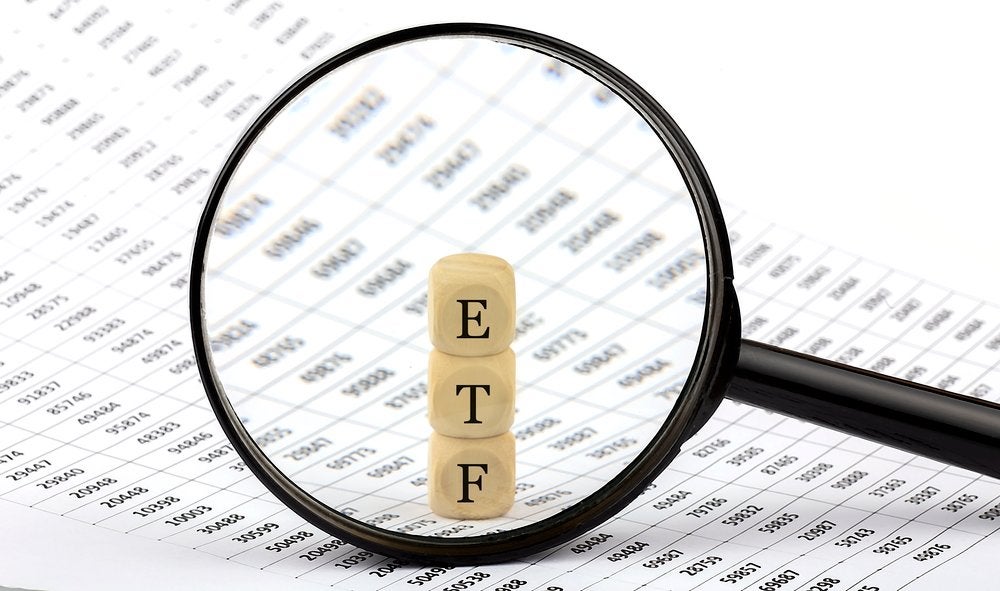Why Not Consider Preferred Stocks? Check Out These 3 Stock ETFs Right Now Preferred stock offers higher yield and less volatility than common stock. Here's what you need to know, especially about preferred stock ETFs.
This story originally appeared on MarketBeat

Preferred stocks aren't exactly stocks, but they aren't exactly bonds, either. They linger on the spectrum somewhere between the two. However, in a volatile world (especially if you're inching nearer to retirement) you may want to lean on something different. Read: Check out preferred stocks as a form of fixed-income security.
In fact, they're called "hybrid" securities because they have both bond- and equity-like qualities. You get both an equity interest in a company as well as interest or dividends based on the face value of the security.
Share prices are a little more hum-drum than shares of common stock that can tick upward — it's more teacup ride than wild roller coaster ride. But that's the tradeoff for less risk compared to common stock.
Why Preferred Stock?
If you're not so comfortable with the risks of stocks but if you're a little more adventurous than going the corporate bond route, why not always go for preferred stocks? Well, preferred stocks are riskier than bonds but offer higher yields and come with long maturities. Some preferred stocks never mature but maturities of 30 years or longer are typical, so you must be comfortable with the idea of this extended date to maturity.
They also cannot take advantage of the price appreciation as the issuing company grows and do not have voting rights. Preferred stock share prices also move in response to interest rate fluctuations or the perceived health of the business, but the price isn't related to the profits of the underlying company.
Unlike bonds, however, you can trade preferred stocks on stock exchanges, which can be fixed or vary based on a benchmark interest rate.
Check Out These Preferred Stock ETFs
Let's take a look at a few preferred stocks you may want to consider. We'll go over a few ETFs for ease of investing in preferred stock. Why consider ETFs instead of going for individual preferred stocks? It takes less time than separating individual preferred stocks for investment.
iShares U.S. Preferred Stock ETF (NASDAQ: PFF)
The iShares U.S. Preferred Stock ETF iShares fund, the largest preferred stock ETF, has more than $19 billion in total assets and average volume close to four million shares traded daily. Financial institutions make up the majority of that list.
The iShares U.S. Preferred Stock ETF iShares fund included Broadcom Inc., Wells Fargo & Company, Bank of America, Danaher Corp, NextEra Energy, Inc., Citigroup, Avantor Inc. and JP Morgan Chase & Co. More than 60% of the entire fund is in preferred stock issued by banks and financial service firms like Bank of America Corp. and JPMorgan Chase & Co. The iShares Preferred and Income Securities ETF has a market capitalization of $17.88 billion, one of the largest preferred stock ETFs.
The iShares Preferred and Income Securities ETF announced a monthly dividend on Monday, January 31. Investors of record on February 2 will be given a dividend of $0.112 per share on Monday, February 7. This represents a $1.34 dividend on an annualized basis and a yield of 3.75%. The ex-dividend date of this dividend is Tuesday, February 1.
Though the fund's 0.46% expense ratio is on the high side for an ETF, it may be worth considering purchasing an ETF instead of directly investing in a preferred stock fund.
Invesco Preferred ETF (NYSEARCA: PGX)
The Invesco Preferred ETF has at least 80% of its total assets in fixed-rate U.S. dollar-denominated preferred securities issued in the U.S. domestic market. The Invesco Preferred ETF pays an annual dividend of $0.72 per share and currently has a dividend yield of 5.23%. The fund has $7 billion in assets and an average volume of nearly three million shares traded daily. PGX has a high dividend yield.
The Invesco Preferred ETF has about 300 total positions and a slightly higher bias toward financials, and has about 67% of its portfolio in banks and similar companies.
The following companies include Citigroup Inc., Wells Fargo & Co., JP Morgan Chase & Co. and Bank of America Corp.
PGX has experienced a 7.68% three-year daily total return with an expense ratio of 0.51%, which is also on the high side, but like the previously listed ETF, it might be worth it in lieu of searching for individual preferred stocks to purchase.
VanEck Vectors Preferred Securities ex Financials ETF (NYSEARCA: PFXF)
The VanEck Preferred Securities ex Financials ETF tries to replicate the price and yield performance of the ICE Exchange-Listed Fixed and Adjustable Rate Non-Financial Preferred Securities Index (PFAN) which has to do with U.S. exchange-listed hybrid debt, preferred stock and convertible preferred stock issued by non-financial corporations.
Notice "non-financial corporations" — investing in the VanEck Vectors Preferred Securities ex Financials ETF could be a good option if you're interested in taking financials out of the picture all together. This ETF contains U.S. utilities, real estate firms and telecom stocks. Keep in mind that the exclusion of financials means that the fund focuses on consumer cyclicals, which responds to changes in the economy.
With assets of $1 billion, the holdings include Broadcom Inc., NextEra Energy Inc., Avantor Inc., Aptiv Plc, the Southern Co, PG&E Corp., Arcelormittal Sa, Dominion Energy Inc., Becton Dickinson and Co., AT&T Inc., Dte Energy Co, Qurate Retail Inc., Boston Scientific Corp, Algonquin Power & Utilities Corp, Duke Energy Corp and Qwest Corp.
The sectors included were electric utilities and IPPs, residential and commercial REITs, telecommunications services, semiconductors and equipment, healthcare equipment and supplies, multiline utilities, automobiles, oil and gas-related equipment, professional and commercial services, food and tobacco, banking services, machinery, metals and mining, diversified retail, natural gas utilities, hotels and entertainment services, electronic and equipment parts, pharmaceuticals and water and related utilities.
The VanEck Preferred Securities ex Financials ETF has an expense ratio is 0.40%. VanEck Preferred Securities ex Financials ETF pays an annual dividend of $1.02 per share and currently has a dividend yield of 5.10%. PFXF has a dividend yield higher than 75% of all dividend-paying stocks, making it a leading dividend payer.
Consider Preferred Stock ETFs
If you're interested in something different than investing in common stock, why not consider preferred stock for its unique makeup and stable returns? Bottom line: Preferred stock offers higher yield and less volatility than common stock. What's not to like?











